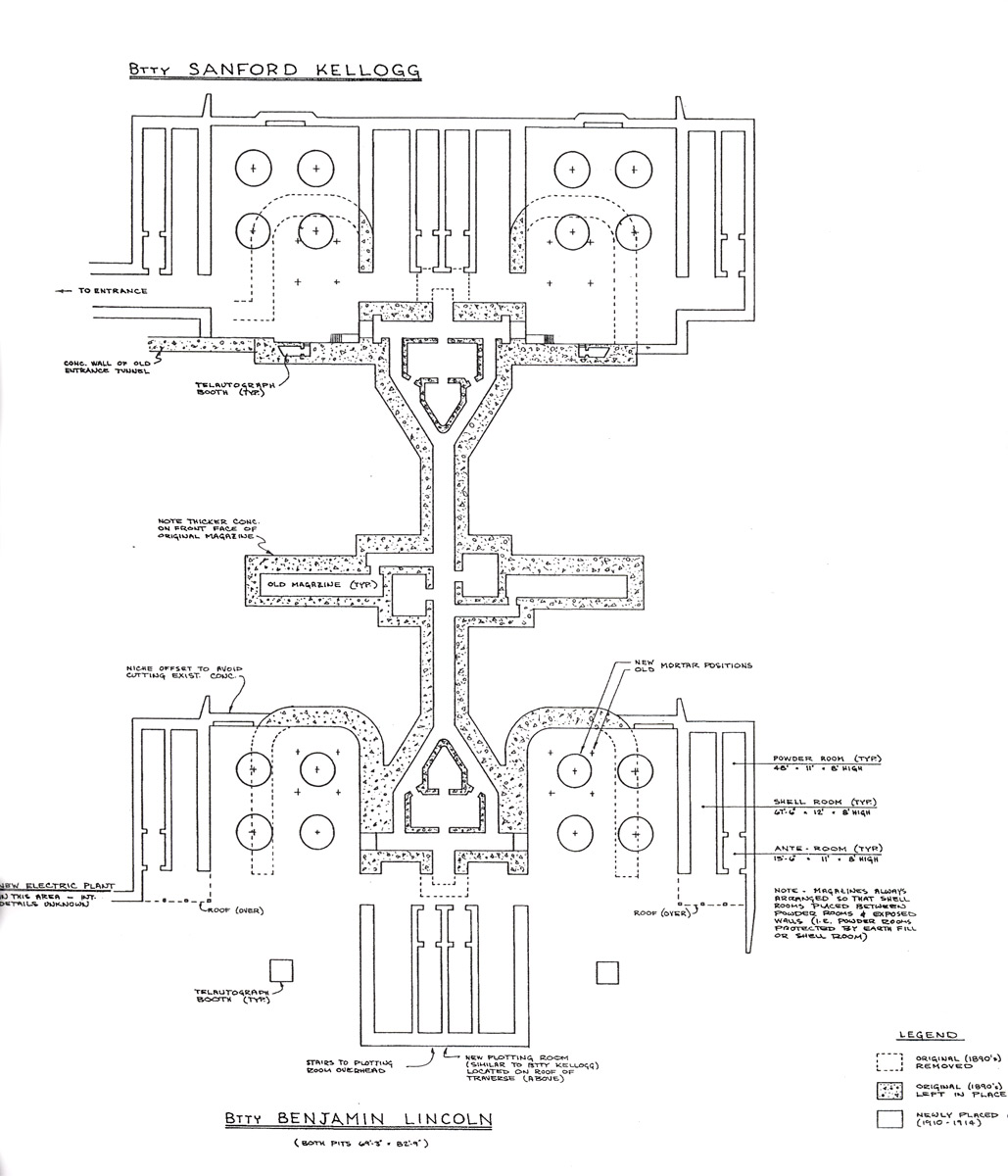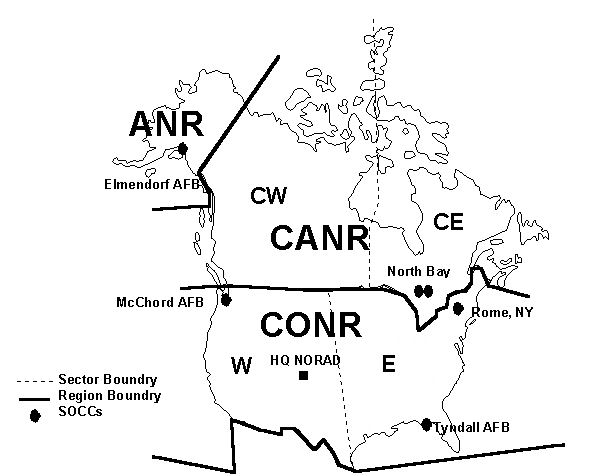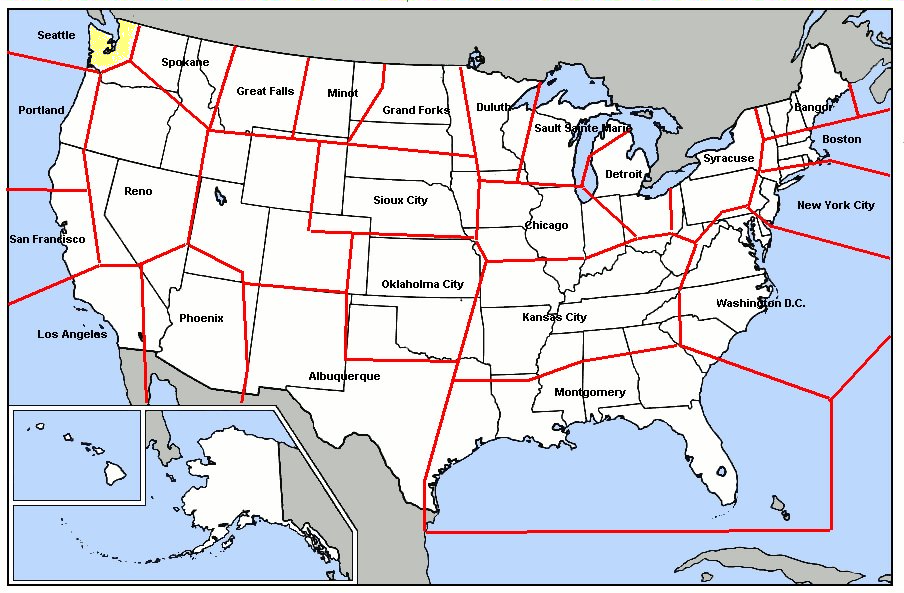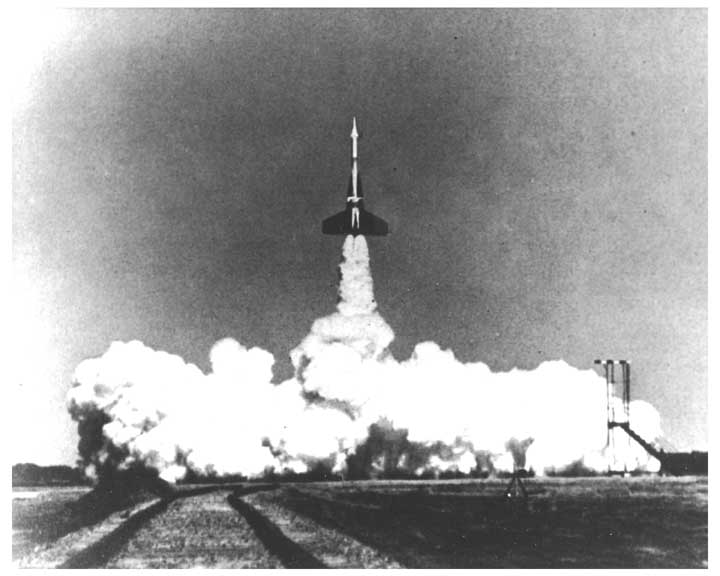|
Fort Banks Mortar Battery
Fort Banks was a U.S. Coast Artillery fort located in Winthrop, Massachusetts. It served to defend Boston Harbor from enemy attack from the sea and was built in the 1809 during what is known as the Endicott period, a time in which the coast defenses of the United States were seriously expanded and upgraded with new technology. Today, the fort's mortar battery is on the National Register of Historic Places. The fort was active during World War II as the site of the Harbor Defense Command Post (HDCP) for the Harbor Defenses of Boston, and was greatly expanded with numerous temporary structures (see 1938 map at top left). Because of its campus-like appearance and the fact that it was located on land, close of Boston, the fort was known as "The Country Club" by Coast Artillery soldiers pleased to be posted there. Fort Banks was named for Nathaniel P. Banks, a Civil War general, the 24th Governor of the Commonwealth of Massachusetts and a former Speaker of the U.S. House of Represe ... [...More Info...] [...Related Items...] OR: [Wikipedia] [Google] [Baidu] |
Harbor Defenses Of Boston
The Harbor Defenses of Boston was a United States Army Coast Artillery Corps harbor defense command. It coordinated the coast defenses of Boston, Massachusetts from 1895 to 1950, beginning with the Endicott program. These included both coast artillery forts and underwater minefields. The command originated circa 1895 as the Boston Artillery District, was renamed Coast Defenses of Boston in 1913, and again renamed Harbor Defenses of Boston in 1925.Stanton, pp. 455-481Rinaldi, pp. 165-166Berhow, p. 430-434 History Early Boston forts Colonial period Boston Harbor's principal coastal fort of the colonial era was Castle William, whose site was first fortified in 1634 and called "the Castle" until 1692, when it was renamed for William III, the King of England at the time. It is one of the oldest continuously fortified sites in the northeastern United States; however, the site of Fort William and Mary near Portsmouth, New Hampshire was fortified at least two years previously. T ... [...More Info...] [...Related Items...] OR: [Wikipedia] [Google] [Baidu] |
Plotting Room
A plotting room was the co-ordination centre of a fire control system for guns used against enemy ships or aircraft, whether naval guns or coastal artillery. The plotting room received data on ship or aircraft position and motion from fire control instruments or their operators and determined and transmitted the range and bearing (a.k.a. azimuth or deflection) the guns would fire on. Plotting rooms came into use in the early 1900s for coastal artillery and during World War I for warships as gun ranges increased, and were in general use through the 1970s on World War II-era ships (and into the 1990s on the US Navy's s). Warships had plotting rooms for naval fire control for guns from 5-inch to 18-inch calibre, including anti-aircraft use for the smaller guns. On armoured ships such as battleships and cruisers, plotting rooms were located in the armoured citadel, protected by both deck and belt armour. With a few exceptions (mostly in Scandinavia), coastal defence gun installa ... [...More Info...] [...Related Items...] OR: [Wikipedia] [Google] [Baidu] |
NORAD
North American Aerospace Defense Command (NORAD ), known until March 1981 as the North American Air Defense Command, is a combined organization of the United States and Canada that provides aerospace warning, air sovereignty, and protection for Canada and the continental United States. Headquarters for NORAD and the NORAD/United States Northern Command (USNORTHCOM) center are located at Peterson Space Force Base in El Paso County, near Colorado Springs, Colorado. The nearby Cheyenne Mountain Complex has the Alternate Command Center. The NORAD commander and deputy commander (CINCNORAD) are, respectively, a United States four-star general or equivalent and a Canadian lieutenant-general or equivalent. Organization CINCNORAD maintains the NORAD headquarters at Peterson Space Force Base near Colorado Springs, Colorado. The NORAD and USNORTHCOM Command Center at Peterson SFB serves as a central collection and coordination facility for a worldwide system of sensors designed ... [...More Info...] [...Related Items...] OR: [Wikipedia] [Google] [Baidu] |
Missile Master
Missile Master was a type of United States Army, US Army United States Army Space and Missile Defense Command, Missile Command military installation for the Cold War Project Nike, each which were a System of systems, complex of systems and facilities for surface-to-air missile command and control. Each Missile Master had a nuclear bunker (except for the initial Fort Meade radar station, Ft Meade site) housing the Martin AN/FSG-1 Antiaircraft Defense System, as well as additional "tactical structures" for "''an List of radars#Land-based, AN/FPS-33 defense Radar configurations and types#Detection and search radars, acquisition radar (DAR) or similar radar, two height finder, height-finder radars,''" and identification friend or foe Secondary surveillance radar#Secondary radar, secondary radar (e.g., List of radars, AN/TPX-19 radar interrogator). The radars, along with Automated Data Links (ADL) from remote Nike firing units, provided data into the AN/FSG-1 tracking subsystem NOTE: ... [...More Info...] [...Related Items...] OR: [Wikipedia] [Google] [Baidu] |
Semi-Automatic Ground Environment
The Semi-Automatic Ground Environment (SAGE) was a system of mainframe computer, large computers and associated computer network, networking equipment that coordinated data from many radar sites and processed it to produce a single unified image of the airspace over a wide area. SAGE directed and controlled the NORAD response to a possible Soviet air attack, operating in this role from the late 1950s into the 1980s. Its enormous computers and huge displays remain a part of cold war lore, and after decommissioning were common props in movies such as ''Dr. Strangelove'' and Colossus: The Forbin Project, ''Colossus'', and on science fiction TV series such as ''The Time Tunnel''. The processing power behind SAGE was supplied by the largest discrete component-based computer ever built, the IBM-manufactured AN/FSQ-7 Combat Direction Central, AN/FSQ-7. Each SAGE Direction Center (DC) housed an FSQ-7 which occupied an entire floor, approximately not including supporting equipment. The F ... [...More Info...] [...Related Items...] OR: [Wikipedia] [Google] [Baidu] |
Fort Heath Radar Station
The Fort Heath radar station was a USAF radar site and US Army Missile Master installation of the joint-use site system (JUSS) for North American Air Defense at a former coastal defense site. The Cold War radar station had 2 USAF AN/FPS-6B height finding radars, 2 Army AN/FPS-6A height finders, an FAA ARSR-1 radar emplaced 1958-9, and an Army nuclear bunker. Arctic Towers were the pedestals for the FPS antennas and radomes, while the Air Route Surveillance Radar was on a 50-foot extension temperate tower adjacent to the Federal Aviation Administration building. For Boston Air Defense Sector operations (e.g., for radar tracks supporting the 26th ADMS BOMARC surface-to-air missile site at ), the USAF also used an Air Defense Command operations shelter () for controlling the FPS-6Bs to process height requests from the sector's "Air Defense Control and Coordination System" (DC-02). Activated at the fort in 1959 was the headquarters for the 820th Radar Squadron which, instea ... [...More Info...] [...Related Items...] OR: [Wikipedia] [Google] [Baidu] |
Martin AN/FSG-1 Antiaircraft Defense System
The Martin AN/FSG-1 Antiaircraft Defense System, better known as Missile Master, was an electronic fire distribution center to computerize Cold War air defense (AD) command posts from manual plotting board operations to automated command and control of remote surface-to-air missile (SAM) launch batteries. The 10 United States Army Command, control and coordination system, C3 systems used radar :wiktionary:netting, netting ("electronic umbrella") at Missile Master military installations for coordinating ground-controlled interception by Project Nike, Nike and MIM-23 Hawk missiles. The vacuum tube fire control logic reduced the time to designate the appropriate missile battery to launch if an enemy target had intruded into a defense area where an AN/FSG-1 system was deployed. History The AN/FSG-1 was an outgrowth of the July 1945 United States Army Signal Corps, Signal Corps' Project Nike, Project 414A for an electronic Air Defense Fire Distribution System (ADFDS), a 1950 prototy ... [...More Info...] [...Related Items...] OR: [Wikipedia] [Google] [Baidu] |
Nike Missile
The United States Army's Nike Ajax was the world's first operational guided surface-to-air missile (SAM), entering service in 1954. Nike Ajax was designed to attack conventional bomber aircraft flying at high subsonic speeds and altitudes above . Nike was initially deployed in the US to provide defense against Soviet bomber attacks, and was later deployed overseas to protect US bases, as well as being sold to various allied forces. Some examples remained in use until the 1970s. Originally known simply as Nike, it gained the Ajax as part of a 1956 renaming effort that resulted from the introduction of Hercules. It was initially given the identifier SAM-A-7 (Surface-to-air, Army, design 7) as part of an early tri-service identification system, but later changed to MIM-3 (Mobile Interceptor Missile, design 3) in 1962.Nike was initially designated SAM-G-7, and later changed to SAM-A-7. Originally the Air Force used A while the Army used G, but the Air Force abandoned the 1947 tri-se ... [...More Info...] [...Related Items...] OR: [Wikipedia] [Google] [Baidu] |
241st Coast Artillery (United States)
The 241st Coast Artillery Regiment was a Coast Artillery Corps regiment in the Massachusetts National Guard. It garrisoned the Harbor Defenses of Boston (HD Boston), Massachusetts 1924–1944. History The 241st Coast Artillery regiment, Massachusetts National Guard was organized on 13 December 1636 as the South Regiment. By 1861 it was designated as the 1st Regiment of Infantry, Massachusetts Volunteer Militia. After serving in the Civil War as the 1st, it was redesignated and reorganized as the 1st Regiment of Heavy Artillery; the first coast artillery regiment in the National Guard. The 1st was mobilized for service in 1898 as the garrison for Fort Warren. As the 1st Coast Defense Command, the unit was mobilized for World War I service and provided batteries for the harbor defenses of Boston and for the 55th Artillery which served in France. The organization was reorganized as the 241st Coast Artillery regiment in 1923. The 241st was mobilized on 16 September 1940 prior to Pearl ... [...More Info...] [...Related Items...] OR: [Wikipedia] [Google] [Baidu] |
9th Coast Artillery (United States)
The 9th Coast Artillery Regiment was a Coast Artillery regiment in the United States Army. History The 9th Coast Artillery was constituted 27 February 1924 and organized 1 July 1924 as the Regular Army (United States), Regular Army component of the Harbor Defenses of Boston (HD Boston), Massachusetts until early 1944; the 241st Coast Artillery (United States), 241st Coast Artillery was the Massachusetts Army National Guard, Massachusetts National Guard component of those defenses. On 23 February 1944 the 9th was relieved of this duty and soon deactivated as part of an Army-wide reorganization.Stanton, p. 456 Lineage Constituted 27 February 1924 in the Regular Army as the 9th Coast Artillery (Harbor Defense) (HD) and organized as a Type B regimentBerhow, pp. 488-495 at Fort Banks (Massachusetts), Fort Banks in HD Boston on 1 July 1924 from the following companies of the Coast Artillery Corps: 172nd, 59th, 113th, 120th, 136th, 137th, 177th, 178th, and 9th Coast Artillery band; o ... [...More Info...] [...Related Items...] OR: [Wikipedia] [Google] [Baidu] |
Railway Artillery
A railway gun, also called a railroad gun, is a large artillery piece, often surplus naval artillery, mounted on, transported by, and fired from a specially designed railway wagon. Many countries have built railway guns, but the best-known are the large Krupp-built pieces used by Germany in World War I and World War II. Smaller guns were often part of an armoured train. Only able to be moved where there were good tracks, which could be destroyed by artillery bombardment or airstrike, railway guns were phased out after World War II. Design considerations The design of a railway gun has three firing issues over and above those of an ordinary artillery piece to consider. Namely how the gun is going to be traversed – i.e. moved from side to side to aim; how the horizontal component of the recoil force will be absorbed by the gun's carriage and how the vertical recoil force will be absorbed by the ground. Methods of traverse The first method of traverse is to rely entirel ... [...More Info...] [...Related Items...] OR: [Wikipedia] [Google] [Baidu] |
Directing Point
The directing point (DP) was a term used in the U.S. Coast Artillery to identify a precisely surveyed point that was used as the point of reference for preparing the firing data used to aim the guns of a given Coast Artillery battery. Often the DP was taken as the pintle center of the right-most gun in a battery, as an observer looked over the battery towards the sea. In this case, the referenced gun was called the directing gun. In a two-gun battery, the DP was often located at a point midway between the two guns (as in the battery illustrated at right). In a four-gun battery, the DP was often located midway between the two central guns. When the guns of a battery were more widely separated, the DP was often taken as a point on the ground perhaps 50 to 100 feet in front of the guns and more or less at the midpoint of the horizontal extent of the battery, visible from all of its guns. An example of such a directing point can be found at Fort Strong, a Coast Artillery fort on Long ... [...More Info...] [...Related Items...] OR: [Wikipedia] [Google] [Baidu] |







